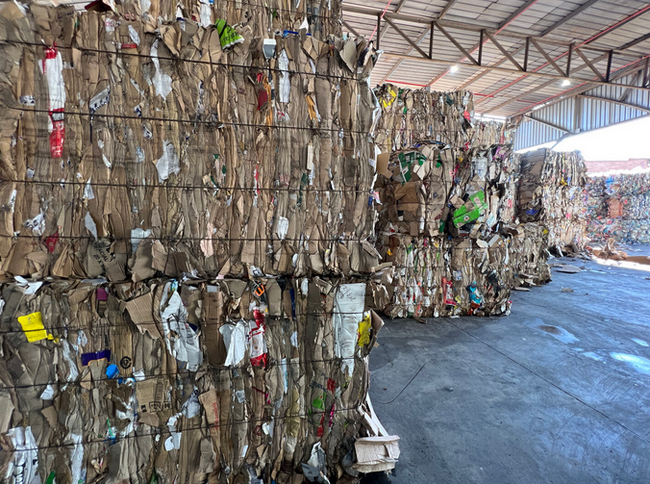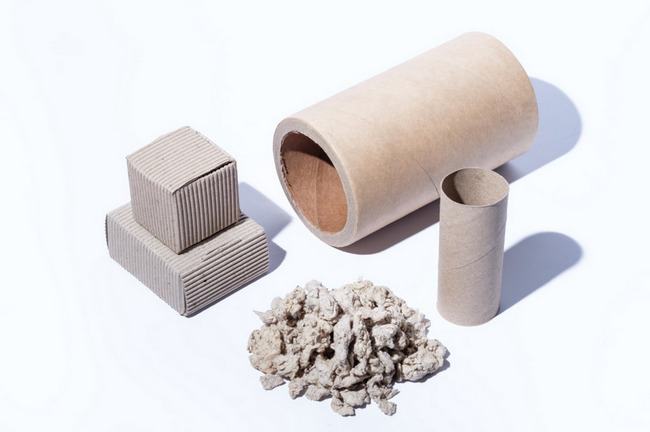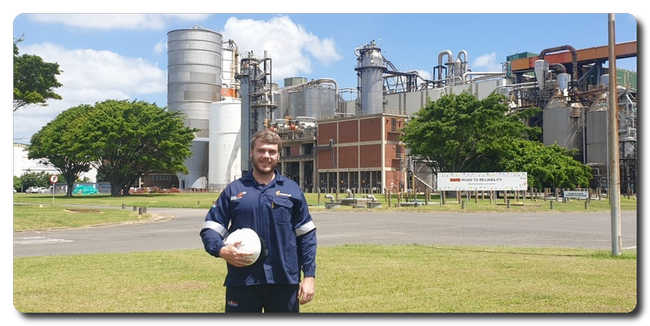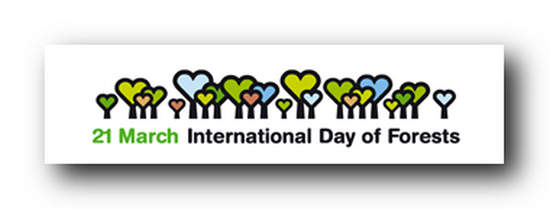Displaying items by tag: pamsa
1.3 million tonnes of paper and paper packaging kept out of SA’s landfills thanks to recycling
Thanks to the waste separation efforts of conscientious citizens, businesses, schools and the greater recycling industry, South Africa recycled just less than 1.3 million tonnes of paper and paper packaging in 2022. If baled and laid out, this would cover 161 rugby fields.
The same amount would weigh as much as 208,553 mature African elephants, or fill 1,502 Olympic -sized swimming pools. “More importantly, it saved 3.8 million cubic metres of landfill[i] space, and ensured that the paper industry could re-use the fibre in cardboard boxes, grocery bags, egg boxes, newspapers, and tissue products,” explains Samantha Choles, communications manager of the Paper Manufacturers Association of South Africa (PAMSA).
“We are certainly seeing more paper packaging entering the market as several brands are shifting to paper, especially in primary packaging - the packaging that contains the item,” says Choles.
Packaging sustainability trends are affecting demand for paper with big brands reducing plastic in their packaging, or at least aiming for single material packaging that is locally recyclable.
During 2022, South Africa produced 1.96 million tonnes of pulp, paper, board and tissue, importing just over one million tonnes and exporting 540,000 tonnes. This put the apparent consumption[ii] of paper and paper packaging at 2.45 million tonnes.
Choles adds that toilet paper and other tissue products are neither collectable nor recyclable, and therefore excluded from what is available for collection. In 2022, two million tonnes were deemed collectable. This excludes 410,000 tonnes of secondary corrugated packaging comprising export fruit, wine and other products. Similarly, PAMSA includes the corrugated packaging, containing imported goods, which therefore become available for the recycling market.

Recycling susceptible to market volatilities
The paper recycling rate for 2022 was 61%. While this is lower than previous years, it’s still comparable with more developed nations such as the United States (68%) and Europe (70%). “Recycling statistics should not be viewed in isolation year on year,” cautions Choles, adding that a lower recycling percentage does not mean that South Africa is recycling less paper. In volume terms, 2022 was higher than previous years.
Recycling is a flow-process, affected by market trends and volatilities, with paper grades taking six to nine months to move through various steps in the supply chain, such as manufacturing and conversion, packing, transit, consumption, and eventually collection and recycling. The latter entails collection by various entities, sorting, then repulping and finally manufacturing and conversion into new paper products. Thus the recycling rates will be affected by how quickly the volumes of paper pass through the market.
Consumers and businesses can do more
The global ‘Trend Tracker Survey 2023’, spearheaded by Two Sides, questioned more than 10,000 consumers from 16 countries on their preferences and opinions regarding various packaging types, their attributes and their impact. Some 62% of respondents said they recycle paper and paper packaging at home, and 78% understand the types of products that need to go into the recycling bin. “This is great news and we hope this will improve as awareness around waste separation and recycling increases,” adds Choles.
Clean and dry paper is essential. Informal recycling collectors and waste traders will earn a better rate if the paper is of good quality. “Consumers must keep wet waste away from dry recyclables. If paper and cardboard get wet, it starts to degrade making the items less recyclable. Good fibre in, better products out,” explains Choles.
Separate bins in the home, and putting a box or bag of clean recyclables on the pavement for recycling collectors are two ways to make a difference, and keep products out of landfill.
“Even with a five-year average paper recycling rate of 67%, we hope that the extended producer responsibility regulations and the various industry programmes will help close the gaps between South Africa’s technical capacity to recycle, infrastructure to recover and collect, and consumer awareness, education and behaviour change,” says Choles.
Recycling closes the circle, cultivated trees keep it going
The ‘Trend Tracker Survey 2023’ also revealed that just less than 70% of South African consumers surveyed believe that only recycled paper should be used - from printing to packaging to tissue products.
“Many people don’t realise that paper fibres are not infinitely recyclable as they shorten after each “recycle” and do not bond well to make new paper. Fresh virgin fibre from sustainably farmed wood will be added to strengthen the pulp recipes.”
Recycling is just one branch of paper’s circularity. From the farming of 850 million trees on 676,000 hectares for pulp and papermaking to the beneficiation of process “waste” into lignosulphonates and other biochemicals, the paper industry is very much a circular economy.
[i] Based on one tonne of baled paper/paper packaging equivalent to three cubic metres.
[ii] Apparent consumption = Local production plus imports less exports
Arbor Month - Why South African businesses going paperless can do more harm than good

By Jane Molony, executive director of the Paper Manufacturers Association of South Africa (PAMSA)
With South Africa celebrating Arbor Month in September, it is a good time to appreciate the role that all trees play in greening our cities, as a food source, in providing timber for construction, as a fuel and, of course, as paper, packaging and tissue.
When it comes to paper, however, there is a still a misconception that reduced paper consumption will help save the planet – an idea seen most often in office-based paperless initiatives that are promoted as being greener or as a means to reduce carbon footprints.
The assumption – which happens to be false – is that using less paper will protect the environment. What we fail to recognise, however, is that the digital world comes at a cost to the environment, a cost that – unlike paper – runs on fossil fuels to a large extent.
It is too easy to ignore the impact of our digital lives – because we don’t see the effect of the energy required to power “the cloud”. We don’t see the electricity consumption it takes to send a thousand emails a month. We don’t see the burgeoning e-waste problem as technology becomes obsolete and isn’t properly discarded – it’s a long list.
Part of the problem is that people don’t understand how sustainable forestry – the industry that produces wood and paper products – works. They don’t realise that a recently felled plantation will be replanted with new trees within the same year. They don’t realise that the trees in plantations remove tonnes of carbon dioxide from the atmosphere and return it as oxygen. They also don’t realise that carbon remains stored in wood even after it’s been turned into pulp for papermaking and other cellulose products. They simply think that paper equals deforestation.
Sustainable forestry, however, is the antithesis of deforestation, which is the removal of trees and natural forests without replanting, such as for some forms of agriculture and the development of housing estates, shopping malls and urban environments. This is why greening these areas with indigenous plants helps to offset their impact.
South Africa’s sustainable forestry centres around the circular approach of planting, growing, harvesting, and replanting fast-growing species. Wood for the country’s forest products comes from sustainably managed exotic trees, not natural or indigenous forests.
This requires that our sector also manages the land and water that plantations share with other biomes, such as grasslands and indigenous forests. While around 850 million trees are farmed over 676,000 hectares by the country’s forestry sector for pulp and paper products, a significant portion is reserved for its biodiversity and conservation value.
South Africa’s pulp, paper, packaging, and tissue products are made from fresh or virgin wood fibres from sustainably cultivated trees, recycled fibre from used paper products, or a mixture of both – depending on the end-use. Technological advances to make these products are also more resource-efficient than they were a few centuries ago, which makes for even more responsible forest management.
The actual cost of businesses going paperless
In 2021, the pulp and paper sector contributed around R28 billion to the South African economy. Although there has been a decline in printing and writing paper demand, we have seen a switch from plastic to paper packaging and cellulose-based innovations, which is encouraging. But there is more to our sector’s impact than its contribution to gross domestic product.
Plantations are grown in rural areas, supporting thousands of households, families, and communities. The South African forestry and forest products sector employs around 150,000 people, and nearly 700,000 people depend on the industry for their livelihoods.
The sector employs people who research tree health, grow seedlings that are more resilient to climate change and disease, plant trees responsibly, nurture them to their required age, harvest them and then take the timber to the mill. A chain of people is required to operate woodyards, the pulp mill, paper machines, and beyond, when paper, packaging paper or tissue is converted into the products we buy at the supermarket or have delivered to our door.
Considering that planted forests are, in essence, crops, businesses going paperless is similar to limiting our consumption of carrots or cabbage and ultimately not supporting farmers and their jobs by consuming their produce.
The words of Greenpeace co-founder Dr Patrick Moore back this up: “We should be growing more trees and using more wood. If [those] landowners had no market for wood, they would clear the forest away and grow something else they could make money from instead. When you go into a lumber (wood) yard, you are given the impression that by buying wood you are causing the forest to be lost, when in fact what you are doing is sending a signal into the market to plant more trees.”
Circular economies
In addition to growing trees and making paper products, the recovery of paper and other materials for recycling serves as a means of income generation for informal waste collectors and small recycling businesses.
Moreover, with much of the forestry-owned land and paper mills situated in rural or semi-rural areas, the forestry and forest products sector contribute to basic infrastructure, including roads, clinics, and schools, and investments in community development and eco-tourism.
This all represents an investment in people, communities and our country, not least of which an investment in the future as we tackle the effects of climate change. So, think again about that little blurb at the bottom of your email. Consider the environment and the economy, before you go paperless.
Paper industry association ups its Master of Chemical Engineering bursary to R320 000
The Paper Manufacturers Association of South Africa (PAMSA) has announced that its bursary and research programme is now open for applications for the 2023/2024 intake. The programme, which offers R320 000 per student over two years, provides a limited number of eligible Bachelor of Science (Chemical Engineering) final year students and graduates with the opportunity to study towards a Master of Chemical Engineering degree.
The development of industry-focused research and innovation is core to PAMSA’s mandate, to help improve pulp and paper mill efficiency, reduce the sector’s water and carbon footprint, and maximise the use of raw material and process waste, while also providing education and employment opportunities for bright, young graduates.

“Trees are sustainably planted, grown and harvested in South Africa and they provide us with countless products that we use every day, from notebooks and newspaper to toilet paper and paper bags,” says Samantha Choles, communications manager for PAMSA. “The goal of a circular economy is pushing our industry to use as much as of its raw material as possible. This includes wood fibre, water, chemicals, recycled paper and making process waste into biochemicals or biofuels.”
Visit www.thepaperstory.co.za/apply for more information on the programme and the link to the application form.
Terms, conditions and qualifying criteria apply. The deadline for applications is 30 June 2021.
PAMSA oversees the education, environmental and research interests of the South African pulp and paper sector. For the past decade, PAMSA has presented a Masters in Chemical Engineering bursary programme to eligible BSc chemical engineering final-year students or graduates with a good academic record and an interest in the bioeconomy, biotechnology, water efficiency, process engineering, waste valorisation and novel material development using wood or paper fibre. After their studies are complete, the students could find gainful employment within the industry.
Paper industry association opens applications to BSc students for its bursary and research programme
The Paper Manufacturers Association of South Africa (PAMSA) Masters of Engineering bursary programme is now open for applications for the 2022/2023 intake. A limited number of students will have the opportunity to further their master’s studies at participating universities by way of a R260,000 bursary over two years.
For the past decade, PAMSA has presented a Masters of Engineering (MEng) bursary and research programme to eligible BSc chemical engineering final-year students or graduates with a good academic record and an interest in the bioeconomy, biotechnology, water efficiency, process engineering, waste valorisation and novel material development using wood or paper fibre. After their studies are complete, the students could find gainful employment within the industry.
“Working as a chemical engineer in the forest products sector not only helps people discover the science behind everyday things such as paper, tissue and packaging, but it also gives young people the chance to be the science behind a cleaner future,” says Jane Molony, executive director of PAMSA.
 Eddie Barnard, a University of Stellenbosch student, used his bursary to explore the commercial viability of using technical lignin (a by-product from the wood pulping phase in pulp or paper making) and pulp and paper sludge (rejected, degraded, and spilled fibres and water from the pulping and paper making processes) to make composite materials. Lignin has binding properties, which when combined with sludge, could be used to make construction materials such as a replacement for particle board. The use of lignin together with pulp and paper sludge could replace components that would otherwise be produced from fossil-based resources, and reduce associated waste, greenhouse gas emissions and disposal costs.
Eddie Barnard, a University of Stellenbosch student, used his bursary to explore the commercial viability of using technical lignin (a by-product from the wood pulping phase in pulp or paper making) and pulp and paper sludge (rejected, degraded, and spilled fibres and water from the pulping and paper making processes) to make composite materials. Lignin has binding properties, which when combined with sludge, could be used to make construction materials such as a replacement for particle board. The use of lignin together with pulp and paper sludge could replace components that would otherwise be produced from fossil-based resources, and reduce associated waste, greenhouse gas emissions and disposal costs.
“The pulp and paper sector is part of the bioeconomy which involves the production of renewable natural resources – in this case farmed wood from tree plantations – and the conversion of these resources and waste streams into value added products, such as food, feed, bio-based products and bioenergy.”
As society seeks lower carbon, more sustainable solutions, the pulp and paper sector, which relies on commercial forestry and paper recycling for its raw materials, presents the country and the world with some unique opportunities for a greener economy, she points out.
The renewability and sustainability of farmed wood and the innovative science behind pulp, paper and process waste puts local and global pulp and paper sectors in an enviable position to address key environmental challenges such as climate change, greener packaging and the circular economy.
 Various biochemicals as well as lignosulphonate can be derived from wood through the pulping process. Lignosulphonate, a brown powdery substance, is used as a dust suppressants on gravel roads in the mining and forestry sector.
Various biochemicals as well as lignosulphonate can be derived from wood through the pulping process. Lignosulphonate, a brown powdery substance, is used as a dust suppressants on gravel roads in the mining and forestry sector.
Molony says research, development and innovation are core to the sector’s mandate, ensuring that it does more with less. “Trees, sustainably planted, grown and harvested, provide us with countless products that we use every day,” she notes, adding that the circular economy is pushing them to use as much as of the tree as possible – from the bark to the trunk, from branches to the leaves. This includes reusing the paper in recycling and beneficiating process waste into biochemicals or biofuels. Not only does less waste goes to landfill, but this keeps carbon (absorbed by the trees) locked up for longer.
Terms, conditions and qualifying criteria apply. Deadline for applications is 30 June 2021, and applicants can apply via the PAMSA website (www.thepaperstory.co.za).
Young forestry and paper researchers urged to put South African bioproduct innovation on the map

With the world’s attention focused on finding greener solutions and cleaner technologies, opportunity is ripe for young scientists and engineers in the forest product and paper sectors to step up to the challenge.
The International Council of Forests and Paper Associations (ICFPA) invites students and young researchers to submit their work for the 2018-2019 edition of the Blue Sky Young Researchers and Innovation Award. The Paper Manufacturers Association of South Africa (PAMSA) is co-ordinating the local leg of the competition which has now opened for entries. The entry deadline is 31 August 2018.
Only three candidates from around the world will have the chance to travel to Canada in May next year to present their ideas to global CEOs in the forestry and paper industry.
“In the new age of the bioeconomy, we want to stimulate competition among students and young researchers under the age of 30 who are doing exciting things with wood, paper and the process waste,” says PAMSA executive director and ICFPA president Jane Molony.
“The sky is the limit with wood fibre,” she adds.
Projects could include a wide range of activities relevant to forest-based science, products using forest-based raw materials, process improvements and other innovations throughout the value chain.
Layered theme
“The theme for the 2018-2019 award is centred on disruptive technologies that are revolutionising the future for forest-based products and services,” says Molony.
The overarching topic has been divided into two categories: ‘future generation forestry’ and ‘innovations in wood-based industries’. “However projects are certainly not limited to these two categories,” she explains.
- Future generation forestry could encompass forest tree breeding and biotechnology; precision forestry and measurements and inventory.
- Innovation in wood-based industries could cover the analysis and properties of pulp and paper; facilities, instrument and process control; bioproducts and wood chemistry; recycling, deinking and the environment; timber for construction; and material substitution with wood and recycled paper fibre.
The SA round
In the lead-up to next year, all countries represented in the ICFPA will hold their own regional round and selection process. PAMSA will receive local applications, carry out a selection process and then nominate up to three candidates to compete internationally. The national finalists will submit a short video clip describing their work,” adds Molony.
The online application process
South African applications are open till 31 August and can be made on www.thepaperstory.co.za under The Research Story or here.
The international selection process
After a transparent and objective selection process, the winning submissions from around the world will have the opportunity to present their projects in front of an audience at the global CEO Roundtable.
Travel expenses to Canada and accommodation will be sponsored by the ICFPA.
SA’s paper recycling 2020 target of 70% reached three years early
The Paper Recycling Association of South Africa (PRASA) has announced the 2017 paper recycling rates. Last year the paper recycling industry along with conscientious consumers and thousands of collectors kept 1,3 million tonnes of paper and paper, boxes and liquid packaging out of landfill. This would fill 1,539 Olympic-sized swimming pools.
This tonnage represents 70% of the 1,8 million tonnes of paper available for recovery, which excludes books and archived records, and unrecyclable paper like toilet tissue.
“We are delighted with our latest statistics as it shows us that people are recycling more,” says Ursula Henneberry, PRASA operations director. In 2015, the association set a target of 70% by the year 2020, and this has been achieved three years early.

In the past six years alone, more than seven million tonnes of paper and paper packaging have been recovered for recycling. If baled, this amount would cover the surface of 1,273 soccer fields, one metre deep. “The unsung heroes are our country’s recycling collectors along with industry players who operate collection and drop-off schemes as well as buy back centres,” notes Henneberry.
“While our recovery rate has increased, there has been a drop in local consumption particularly in printing and writing grades, so much so that a newsprint paper machine was closed down last year,” remarks Jane Molony, executive director of the Paper Manufacturers Association of South Africa (PAMSA). This has resulted in a slight drop in the actual tonnage from 1,4 million tonnes to 1,3 million tonnes.
“This decline is however in line with international trends,” adds Molony. The average annual per person consumption in South Africa has dropped from around 50kg in 2011 to close to 40kg in 2017. Some of this reduction is attributable to cost saving, electronic media substitution and the country’s weak economic growth.
The paper packaging industry does not need another tax
Commenting on the Section 28 notice1 (published on 6 December 2017) calling for Industry Waste Management Plans, PAMSA asserts that the private sector consistently invests in voluntary waste management initiatives without it being mandatory. “We would prefer not to have mandatory taxes as these will increase the price of packaging. And our economy and already cash-strapped consumers cannot afford additional costs,” explains Molony.
In addition the objectives of the notice will not be met through more taxes but rather through strengthening existing partnerships between industry, municipalities, the Department of Environmental Affairs and other public institutions. It is through partnerships with the likes of the Fibre Processessing and Manufacturing (FP&M) SETA that PRASA have trained over 6,000 recycling collectors and entrepreneurs since 2010. PRASA has also worked with the FP&M SETA and the Quality Council for Trades and Occupations to formalise the qualifications that these entrepeneurs receive.
According to Statistics SA, there has been a substantial increase of jobs in the paper recycling sector from 2016 to 2017, which has been buoyed by robust demand from paper mills.
Robust local beneficiation
The sector has the capacity to process all the waste paper it collects and less than 5% was exported in 2017. As a result, South Africa is less vulnerable to the vagaries of the international waste paper market and although China’s moratorium on waste paper imports did have some impact, it was neglible compared with the likes of that in the USA and the UK.
“As an industry, we embark on numerous awareness drives, promoting better separation-at-source to reduce the contamination of waste paper and provide a better quality fibre for paper manufacturers,” Molony concludes.
1 A notice in terms of section 28 of the National Environmental Management: Waste Act, 2008 (Act No 59 of 2008) (Notice) was published on 6 December 2017. Each packaging waste stream will have to submit an Industry Waste Management Plan (IndWMP) to the Minister by September 2018. According to the Notice, the Waste Bureau will oversee these plans and a tax will be collected by SARS to implement the IndWMPs.
Commercial forests are full of untapped energy

The theme of the 2017 United Nations International Day of Forests is Forests and Energy. The International Council of Forest and Paper Associations (ICFPA) is proud to represent the global forest products industry, which plays an important role in contributing to the production of renewable energy and reducing dependence on fossil fuels by using wood manufacturing residuals, byproducts and forest residues – collectively known as biomass – to produce much of the energy required for its operations.
The South African sector is represented through the Paper Manufacturers Association of South Africa (PAMSA). Jane Molony, PAMSA executive director and ICFPA vice chair, says that the local pulp and paper sector is in some instances totally self-sufficient and has additional power to sell into the grid. “This energy, by virtue of the cogeneration process and biomass based lignin content in black liquor, uses less water and emits less CO2 than regular coal based power production. This is why PAMSA finds it particularly galling that the Department of Energy’s recently published draft Integrated Resource Plan for energy excludes cogeneration as a viable, green technology.”
According to the international carbon accounting principle, when combusted for energy, biomass does not contribute to global climate change as growing trees sequester carbon from the atmosphere via photosynthesis. The ICFPA reiterates the carbon neutrality of biomass in a policy statement: http://www.icfpa.org/uploads/Modules/Publications/icfpa-statement-on-biomass-carbon-neutrality.pdf
“The forest-based industry also can substitute for a wide range of fossil fuel-based products on the market, hence providing additional climate benefits as well as welfare to society,” said ICFPA President Elizabeth de Carvalhaes.
According to the United Nations Food and Agriculture Organization, wood provides the world with roughly 40 percent of current global renewable energy supply – more than solar, hydroelectric or wind power. Sustainably-managed forests have a key role in meeting several United Nations Sustainable Development Goals and providing solutions for a growing green economy.
To increase the role of forests in providing renewable energy and to reduce the use of fossil fuels, the forest-based industry invests in technological innovation and sustainably-managed forests to improve yields and practices. In the past ten years, the energy share of biomass and other renewable fuels has increased from 53 to 63 percent.
The ICFPA represents more than 30 national and regional forest and paper associations around the world. For more information about the sustainability of the global forest and paper industry, visit www.icfpa.org
ABOUT PAMSA
PAMSA has been promoting the interests and efforts of the South African pulp and paper industry since 1992. Any employer involved in the manufacture of pulp, paper, board, tissue and recycled paper in South Africa, may hold PAMSA membership. With our member companies continually striving to improve the way they do business, PAMSA supports their efforts by bringing them together on pre-competitive issues of mutual concern. These include education and training, energy production and use, water and waste, and research and development. The Paper Recycling Association of South Africa (PRASA) is housed within PAMSA.
www.thepaperstory.co.za | www.recyclepaper.co.za
